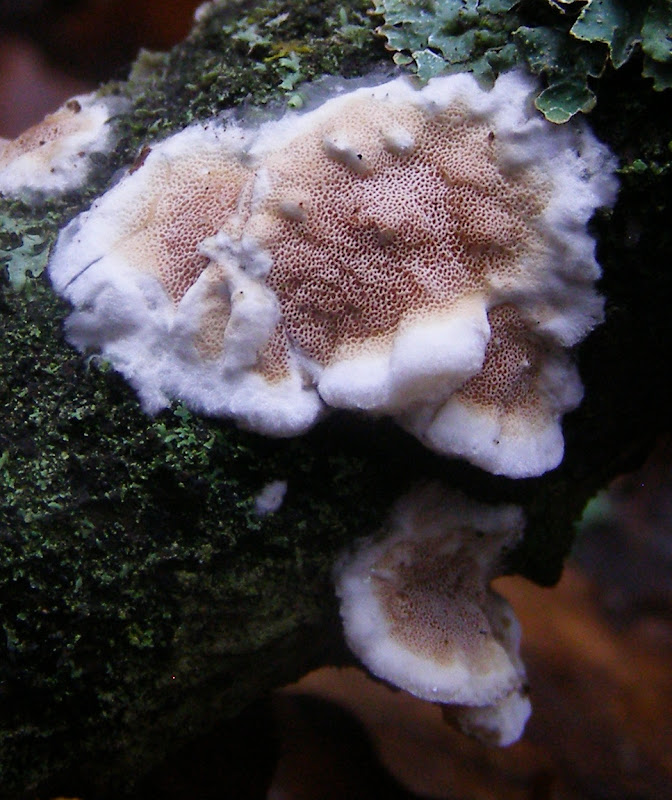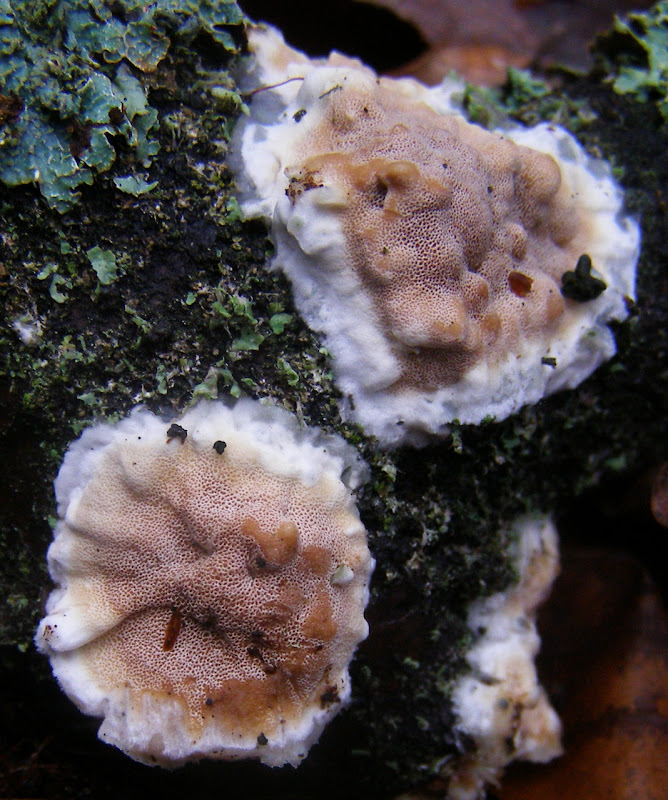
From back in January: a white crust fungus with a pink pore surface. It was growing on a branch that had fallen from a deciduous tree. To give an idea of the scale, the branch was only 4 or 5cm thick.
I used to think it was probably Gloeoporus dichrous but then suspected it might be Junghuhnia nitida. However, Peter 'Ditiola' at WildAboutBritain thinks it 'looks good' for G. dichrous. I am keeping a lookout for a further specimen to test this identification using my microscope. Actually, it was my inability to identify this fungus back in February that finally persuaded me that I needed to get a microscope.

Photos taken in the Wilderness, Whiteknights Park, Reading, UK, on 2012-01-25.
 Tue 2012-12-04
Tue 2012-12-04 